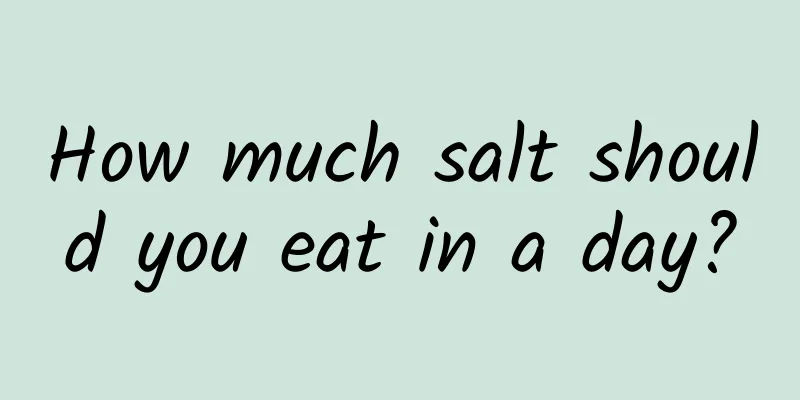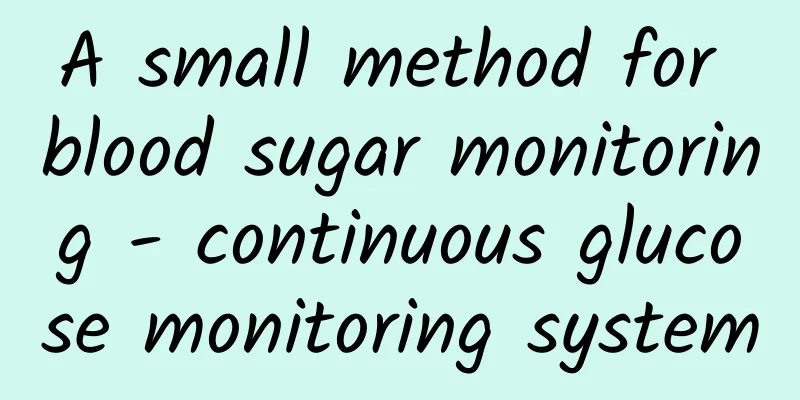How much salt should you eat in a day?

|
This is the 2870th article of Da Yi Xiao Hu Why do we eat salt? The main component of table salt is sodium chloride, which gives us the superficial feeling of "salty". Most Chinese dishes are salty as the basic flavor, and it is the table salt that allows us to enjoy delicious food. The sodium element in sodium chloride is an indispensable chemical element in our body. We have about 6200-6900 mg of sodium in our body. Sodium is widely present in various tissues and organs in the body, regulating the body's water content, enhancing neuromuscular excitability, maintaining acid-base balance and normal blood pressure. There is danger in saltiness Epidemiological surveys on hypertension have confirmed that the blood pressure level and prevalence of hypertension are closely related to salt intake. The prevalence of hypertension in the north is higher than that in the south, and the average blood pressure in rural areas is higher than that in cities. The salt intake is consistent with this, which is also higher in the north than in the south, and higher in rural areas than in cities. Intervention treatment for clinical hypertension has confirmed that when salt intake increases, blood pressure rises. People over 50 and those with family history of hypertension are more sensitive to changes in salt intake. If the salt in the diet increases or decreases, the blood pressure will change accordingly. A high-salt diet can also change the pattern of high blood pressure during the day and low at night, making it high during the day and high at night, greatly increasing the risk of cardiovascular and cerebrovascular diseases. The blood pressure of overweight and obese people is more sensitive to salt. How much salt should you eat in a day? The sodium needed by the human body mainly comes from food and drinking water. Salt, soy sauce, monosodium glutamate, sauces and pickles, pickled products, etc. can provide more sodium, and meat and vegetables can also provide a small amount of sodium. The normal adult needs 2200 mg of sodium per day. The food consumed by an average adult on a daily basis contains about 1000 mg of sodium, and the sodium required from salt is about 1200 mg. Therefore, based on the actual daily food intake, 3 grams of salt can basically meet the body's sodium needs. Due to people's dietary habits and taste preferences, the salt intake is far more than 3 grams. Of course, it is difficult to follow dogma in daily life, and we still need to consider factors such as habits, customs, and preferences. Here, the Shanghai Center for Disease Control and Prevention recommends that healthy adults consume 5 grams of salt a day (including the salt in soy sauce and other foods). Author: Shanghai Center for Disease Control and Prevention Jenny Zhu |
<<: What should you eat if you have high blood pressure? Save these 4 suggestions
>>: What material is good for yoga mats? Differentiate between the front and back of yoga mats
Recommend
How long do you usually ignore a man?
When a relationship is about to come to an end du...
What are the types of rings?
Although having a perfect sex life can promote in...
How to have an abortion in early pregnancy
I believe that many female friends will panic whe...
Why should I check my vaginal discharge at 37 weeks?
Many women think that discharge is harmless, as l...
Tea for women during menopause
One-third of a woman's life will be spent aft...
4D color Doppler ultrasound of fingers and toes
Four-dimensional color ultrasound is a more popul...
What should I do if my aunt hasn't left for half a month?
Menstruation is something that women must experie...
Six kinds of nutritious dried fruits are the best snack companions for women
In fact, various dried fruits have their own uniq...
Saving money is not as good as "saving muscles"? Research finds: People with muscles live longer!
The "Proton Group" with tight and power...
My period is light and black, what's going on?
It is caused by an imbalance in neuroendocrine fu...
Brown discharge after menstruation
I believe every girl is familiar with menstruatio...
Where is red okra mainly distributed? When is the best season to eat red okra?
Green okra, also known as yellow okra, is the mos...
How do doctors calculate medication doses for children?
The growth and development of children is a conti...
What to do if you have yeast infection during pregnancy
Mold is a type of bacteria that is widely present...









